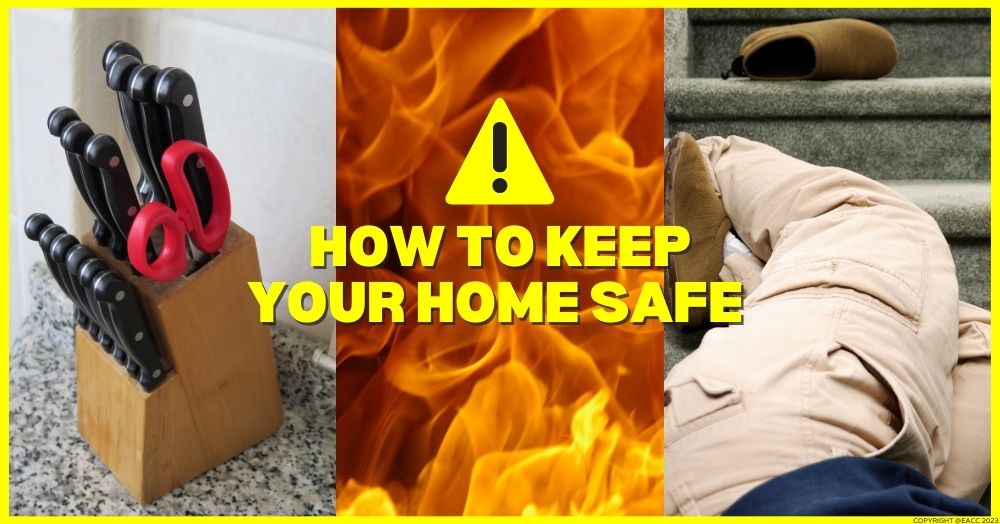Some days, it’s like your home is a minefield of accidents just waiting to happen. You trip up the stairs with a pile of washing in your arms, you break your favourite mug, and to top it all off, you burn the toast. Not fun.
While everyone wants a home that is safe and hazard-free, sometimes little mishaps can cause a whole lot of bother. So, how can we make our homes safer for all?
In this quick read, we look at some of the most common accidents that can happen at home and share some tips to improve safety.
Falls
Falls are the number one risk in the home. In fact, the NHS estimates that 1 in 3 people aged over 65 and half of people over 80 will have at least one fall a year for a variety of reasons.
While it might be impossible to avoid falls completely, you can try and avoid them. For example, it’s important to keep stairs free of any obstructions or trip hazards, such as loose carpet or stacking things on them. Look around your home and try to identify trip hazards which can be easily fixed. These could include:
- Uneven steps or paving outside the property
- Keeping dark areas well lit
- Rugs or mats which aren’t secure
- Cables or leads
- Furniture placement
Kitchen safety
If you’ve got children, you know that accidents can happen in seconds, and nowhere is more dangerous than the kitchen. It’s important to child-proof your cooking area to prevent accidents. Here are some examples:
- When cooking on the hob, make sure handles are towards the back so a child can’t grab them
- Make sure knives and scissors are out of reach
- Store cleaning products safely away from children
- No hanging cables
- Keep alcohol on higher shelves
You can also keep cupboards and drawers extra safe by using child-proof latches.
Fire safety
When was the last time you checked the batteries in your smoke alarm? It’s important to test it regularly to make sure it’s working. If you have a fireplace or electric fireplace, is it well guarded? Is the guard secured to the wall? This is especially important if there are young children in the home. Other fire safety tips include:
- Keep candles away from curtains or upholstery
- Make sure matches, lighters and candles are out of reach of children
- Don’t smoke in the home
- Don’t air-dry clothes near the gas hob or near open fires
At Hi Residential, we take safety in the home seriously. Have you got any safety tips you can share? Comment below.





